Landscaping next to your house is key to both its beauty and structural health. The area around your foundation can either enhance your home or lead to costly damage.
Proper landscaping around your house involves choosing the right plants, adding drainage solutions, and incorporating features like rock borders.
These elements work together to protect your foundation while enhancing the exterior.
In this guide, we’ll cover the best practices for landscaping next to your house, from selecting safe plants to adding functional features.
Table of Contents
Understanding the Risks of Poor Landscaping Around Your Foundation
Landscaping around the house foundation areas must be approached with care. If not adequately planned, plants and features can damage your foundation, leading to water buildup, erosion, and cracking. This section highlights why you need to be cautious when landscaping around house foundations, particularly focusing on:
- The importance of proper drainage
- Risks associated with plant roots damaging the foundation
- Impact of poor maintenance on the foundation’s integrity
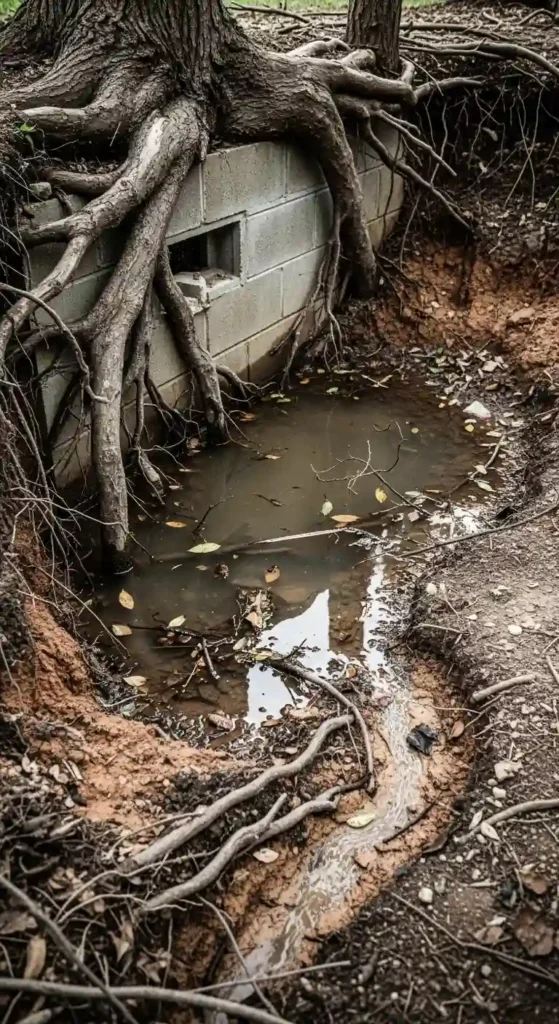
Best Practices for Landscaping Next to Your House
Proper Grading and Drainage Solutions
One of the primary considerations when landscaping next to house foundations is managing water runoff. Water pooling near the foundation can cause severe damage over time. Proper grading helps ensure water flows away from the foundation.
Suggestions:
- Use river rocks around the house foundation for better drainage.
- Consider creating a slight slope around the edge of the house landscaping to direct water away.
- Integrate drainage solutions like French drains for properties with poor natural drainage.
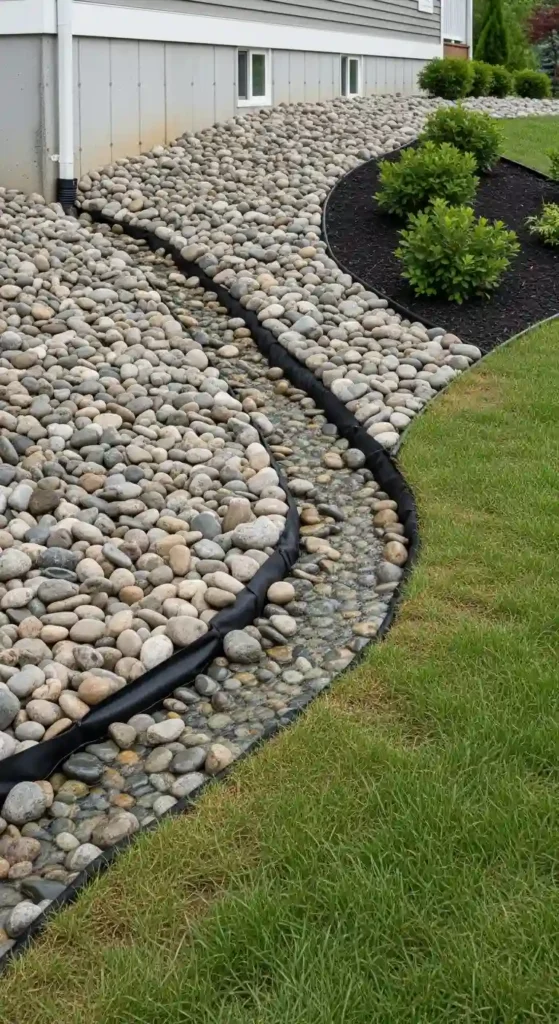
Plant Selection and Garden Ideas for the Perimeter
Choosing the right plants to install close to your house landscaping is essential for foundation protection. You want to ensure that plant roots don’t grow deep enough to damage your house’s foundation, but you still wish to have vibrant greenery around the perimeter.
Suggestions:
- Opt for shallow-rooted plants like lavender, boxwoods, and low-growing ground covers.
- Flower beds around the house foundation can add a pop of color without disrupting the structure.
- Use mulch around plants to reduce water evaporation and minimize root damage.
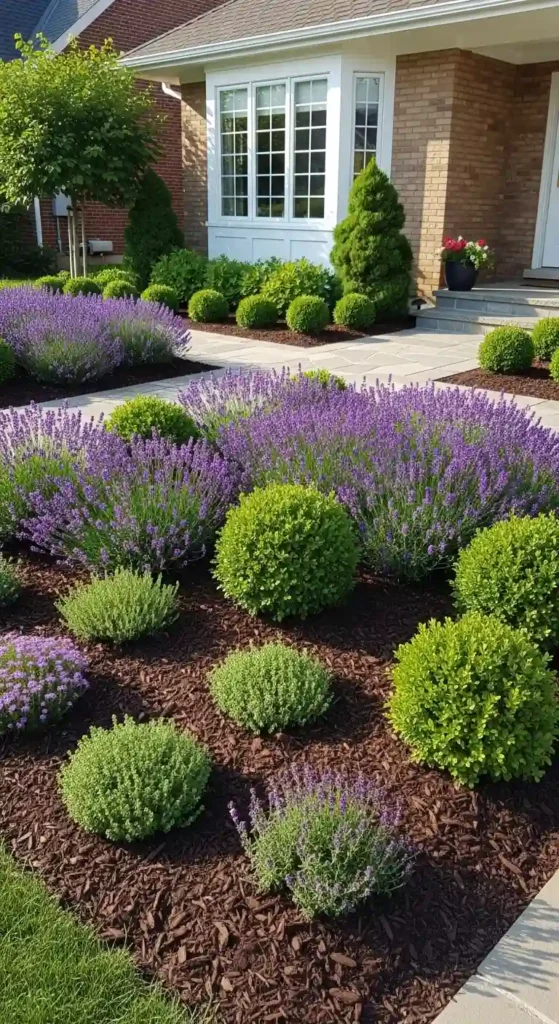
Hardscaping Features to Enhance Your Foundation Landscaping
Borders and Edging Materials
Hardscaping features like borders and rock edges add structure and visual appeal to foundation landscaping. Using materials like stone, brick, or wood, you can create a defined edge around the house that prevents soil erosion and provides a clear visual separation.
Suggestions:
- Install a rock border around the house foundation to add a rustic charm while protecting the foundation.
- Consider adding a stone or brick perimeter for a more refined, structured look around the house.
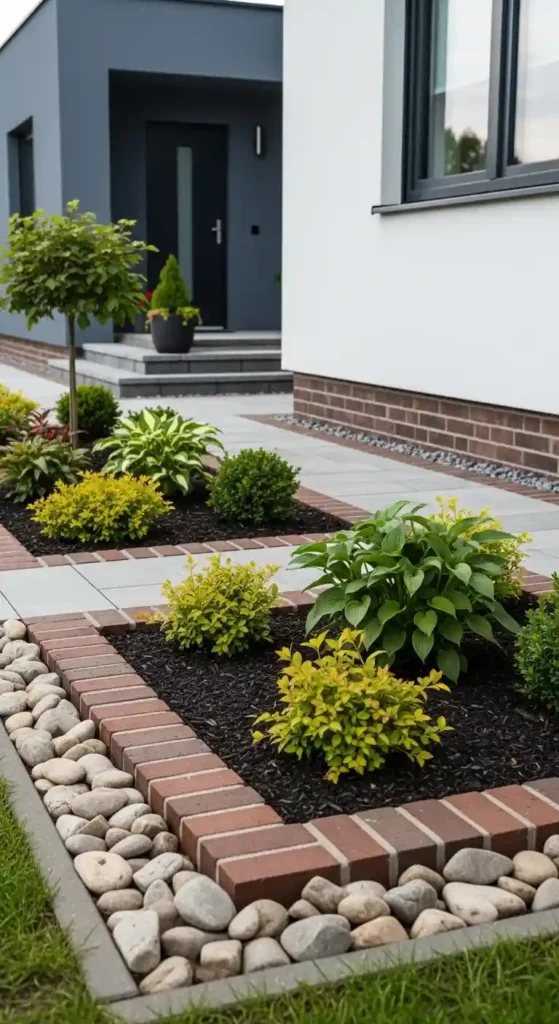
How to Use Landscaping Around the House Perimeter for Functional Purpose
Landscaping around the perimeter of the house not only protects the foundation but can also define spaces and improve curb appeal. Whether it’s adding a decorative fence or creating a garden path, the perimeter is an ideal location for many landscaping features.
Suggestions:
- Add a decorative garden path with gravel or bricks along the edge of your house landscaping.
- Plant flowering shrubs or ornamental grasses to provide year-round visual interest and privacy.
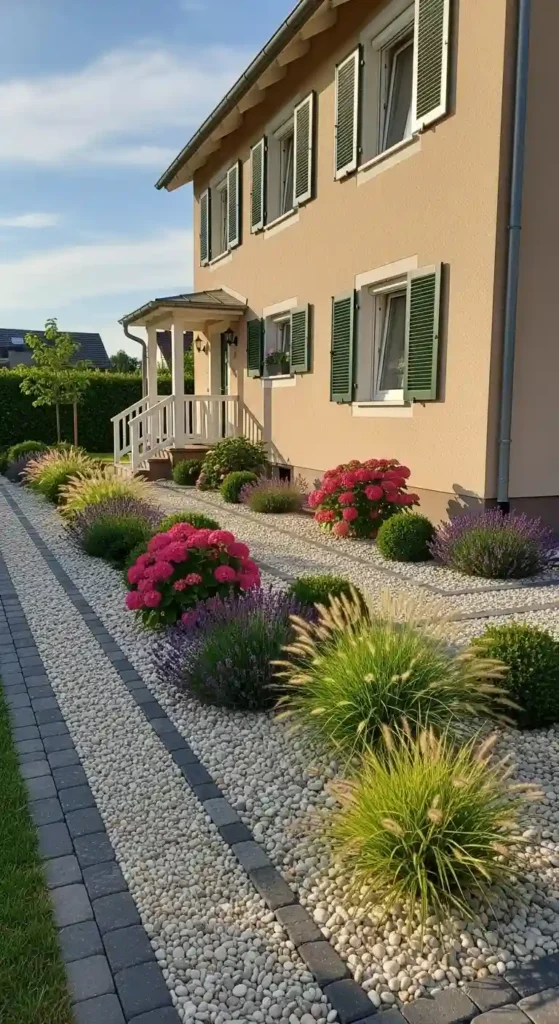
Maintenance Tips for Long-Lasting Landscaping Around Your Foundation
Proper maintenance ensures that your foundation landscaping continues to thrive and protect your home. Regular cleaning, pruning, and mulching are essential to keep your plants healthy and your drainage systems functioning well.
Suggestions:
- Keep the flower beds around the house foundation clear of debris to prevent moisture buildup.
- Replenish mulch annually and prune plants to avoid overgrowth and root intrusion.
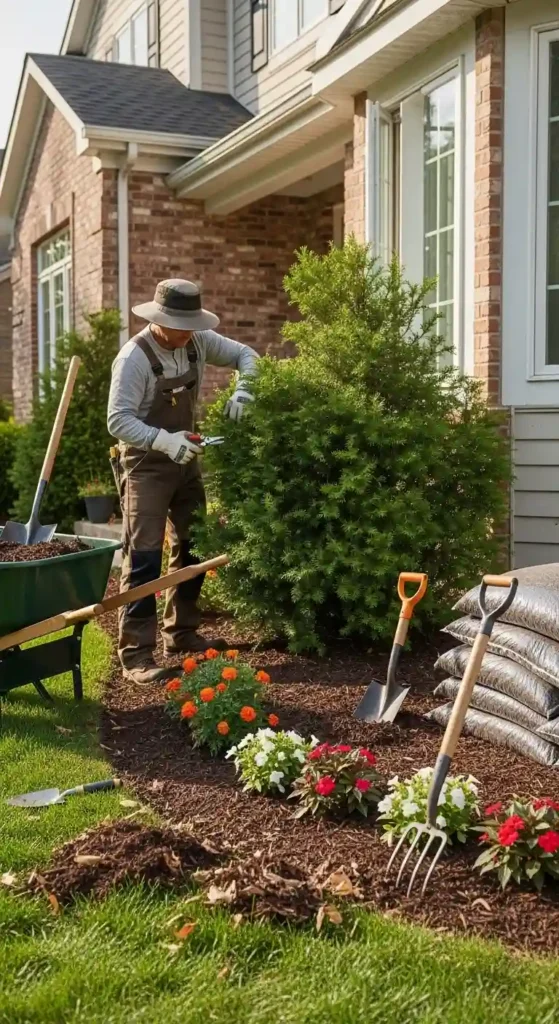
Eco-Friendly and Sustainable Landscaping Around Your Foundation
With growing concerns over environmental sustainability, eco-friendly landscaping is becoming a priority for many homeowners. By using native plants, water-saving techniques, and organic materials, you can create a foundation landscape that benefits both your home and the environment.
Suggestions:
- Choose drought-tolerant plants and xeriscaping techniques to reduce water usage.
- Use organic mulch and compost to improve soil health and prevent weeds.

Conclusion
Landscaping next to the house isn’t just about aesthetics; it’s about ensuring your home’s foundation is protected while adding visual appeal. By following the best practices for grading, plant selection, and hardscaping, you can create a stunning, functional landscape that will enhance the longevity of your home.
FAQ’s
1. What is the best material to use around a house foundation?
Gravel and rubber mulch are great for drainage, while concrete or brick edging can add structure and prevent erosion around your foundation.
2. How far should shrubs be planted from the foundation?
Shrubs should be planted at least 2 feet away from the foundation to prevent moisture buildup and allow for proper air circulation.
3. Can I plant flowers next to my house foundation?
Yes, but choose shallow-rooted, drought-tolerant flowers. Avoid species that need frequent watering to prevent moisture issues near the foundation.
4. What are the signs of foundation problems caused by landscaping?
Signs include cracks in walls, uneven floors, sticking doors/windows, and water pooling near the foundation, all of which can result from improper landscaping and drainage.
5. How can I improve drainage around my house foundation?
Regrade your yard, install downspout extensions, use permeable materials like gravel, and regularly clean gutters to direct water away from the foundation.
